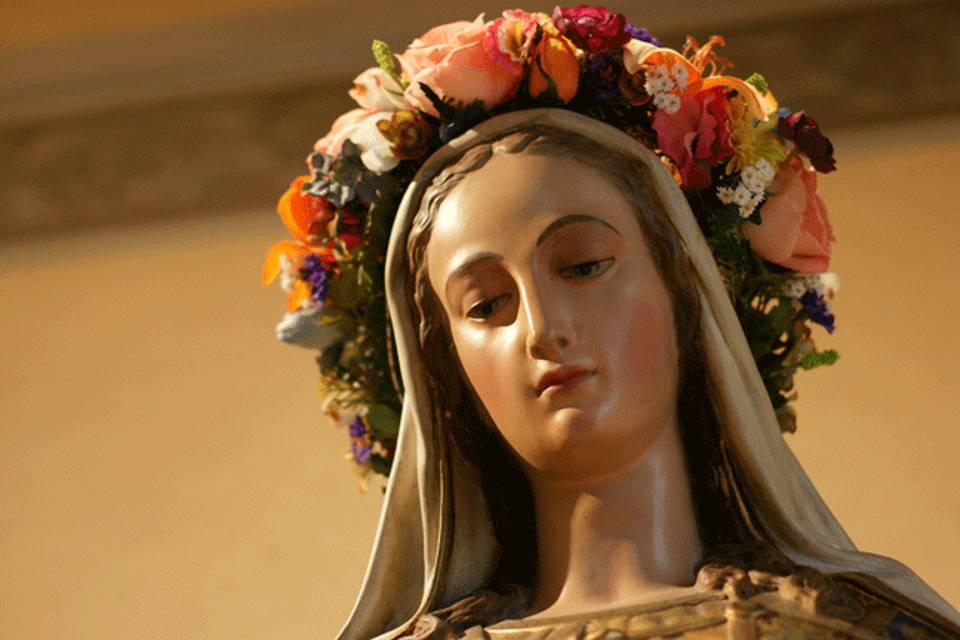
Flores de Mayo
Heinrich Heine’s famous “Lyrisches Intermezzo” contains sixty-six songs and a prologue where we meet a dreamy poet, the knight:
Once upon a time, there was a melancholy knight,
With haggard, snow-white cheeks;
He staggered and stumbled, and lumbered around,
Obsessed by gloomy visions.
He was so wooden, so clumsy, so awkward;
Flowers and maidens giggled,
whenever he lumbered by them.
And then he sings:
In the beautiful month of May,
when all the buds were bursting,
then in my heart love broke forth as well
In the beautiful month of May,
when the birds were singing,
I told you my desire and my longing.
In the poem, the knight yearns for his unnamed beloved. Neither is she known.
The practice of offering flowers during the month of May in the Philippines – the Flores de Mayo – on the other hand, is done for a known beloved. She is also named, but as her attributes are many, this comes in various titles. She is the Mystical Rose, the Seat of Wisdom, the Tower of Ivory, the Gate of Heaven, the Morning Star, and the Star of the Sea or Stella Maris, for “as mariners are guided into port by the shining of a star, so Christians are guided to heaven by Mary.” (Saint Thomas Aquinas, Doctor of the Church)
This does not confuse, for whichever name she is called is simply an extension of her being immaculate, and therefore open to a level of perfection that no other lady can possess. Nonetheless, as a mother is to a daughter, she desires that whatever she has, she bestows; and in our acknowledging her as a mother, we are assured of her aid and intercession.
The knight’s beloved, as it is beholden to the ideal, may remain unknown and unnamed, as perfection cannot be contained in mortality. In contrast, while in heaven, Mary’s humanity, in its perfection, may be felt, sensed, and continually made manifest, as more and more were dazzled by Diego’s tilma. On that hill in Tepeyac, she asks him, “Am I not here who am your mother? Are you not under my shadow and protection? Are you not in the folds of my mantle, in the crossing of my arms?”
Indeed, she is more Mother than Queen (Saint Therese of Lisieux, Doctor of the Church), as She is a mother first and foremost to the Child. Thus, it is appropriate that an entire month is devoted to Her, just as what is due – a month known for Marian festivities, a month known when flowers are in bloom, as flowers are befitting a Lady.
In 1867, Mariano Sevilla published an interpretation of Flores de Maria in Bulacan for Filipinos which gave form and substance to the Marian devotion. Since then, the Flores de Mayo has become a tribute celebration and thanksgiving, initially by farmers as they welcomed the rain and the stunning flowers that bloom in the month, and eventually, by children, of all ages, as we will always be children in Mary’s eyes.
“Let all thy joys be as the month of May” (Francis Quarles), when “the earth laughs in flowers.” (Ralph Waldo Emerson)


No Comments